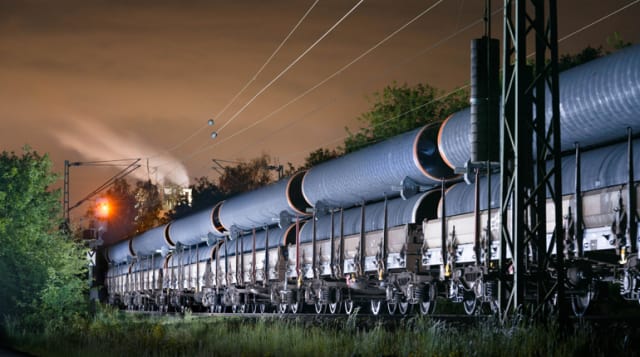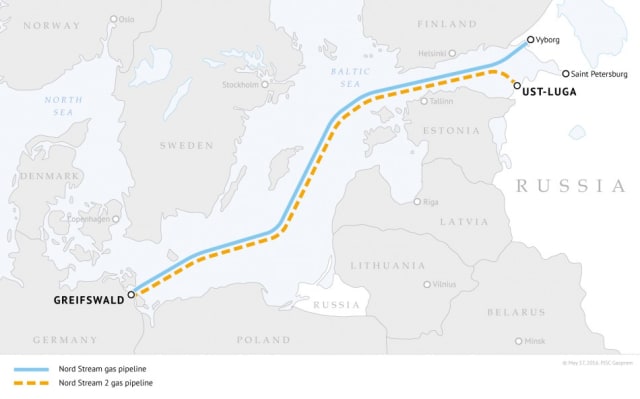
A train transports pipes for the Nord 2 Stream Pipeline.
On September 5, the offshore pipelay vessel Solitaire started laying pipeline in the Gulf of Finland. The pipelaying was a routine operation, but it received international press coverage. That’s because the pipeline will eventually be part of one of the most controversial energy projects in recent history.
The Nord Stream 2 is planned to stretch across the Baltic Sea, funneling Russian gas to German power stations. The European Union (EU) says that the pipeline is against EU regulations, and that it could increase the region’s dependence on Russia at a time when relations between Eastern Europe and Russia are strained.
From ecological anger in Russia to rebuffs from Denmark to a mixed reception in Germany, following the pipeline along its proposed route exposes a string of controversies and complications.
Pipeline Overview
The Nord Stream 2 will travel the 1,222km (759.3mi) from Vyborg, near St. Petersburg, to Lubmin, Germany,closely following the route of the original 2011 Nord Stream Pipeline. When Nord Stream 2 is completed, the pipeline’s capacity is set to double to 110 billion cubic meters (3.9 trillion cubic feet) per year, nearly a quarter of total EU demand. Currently, Russian gas is responsible for only 4.3 percent of German power generation, but the country’s commitment to phasing out coal and gas may drive that number up in the coming years.

Nord Stream 2 (in orange) follows…

